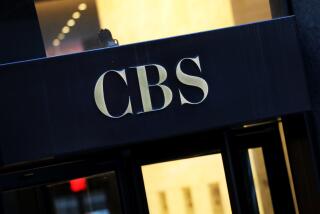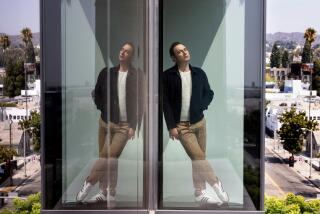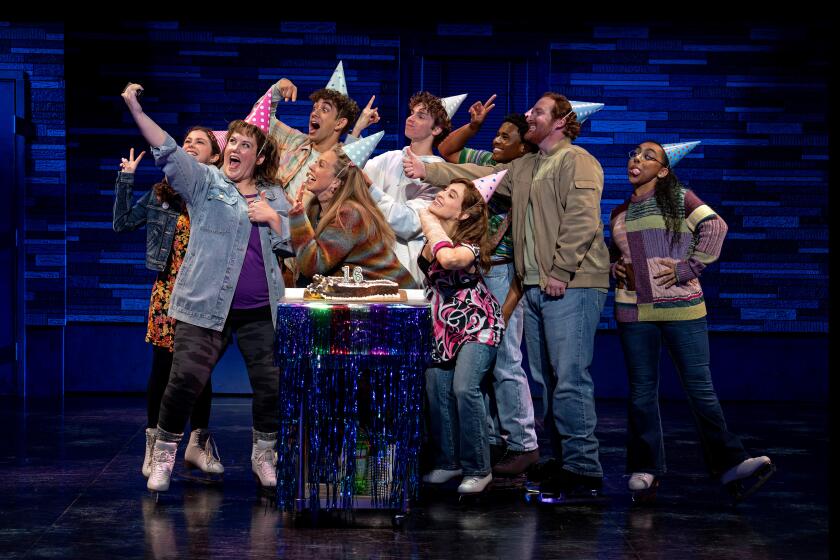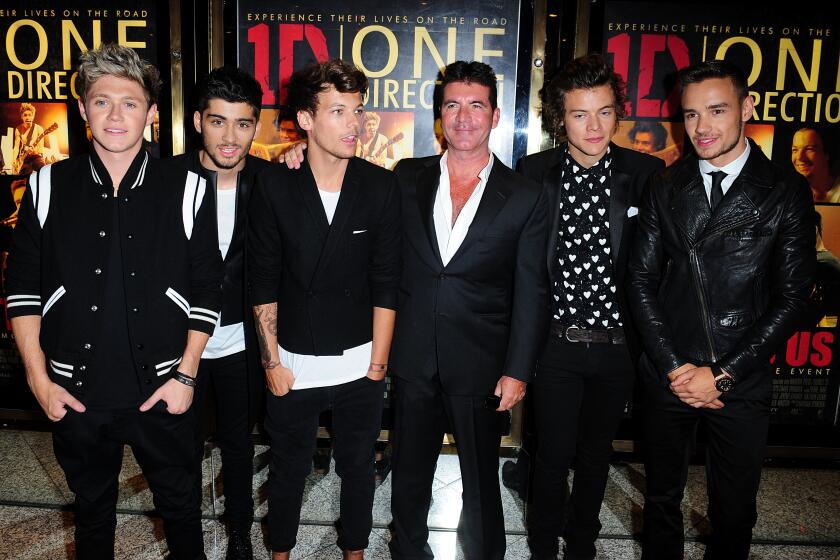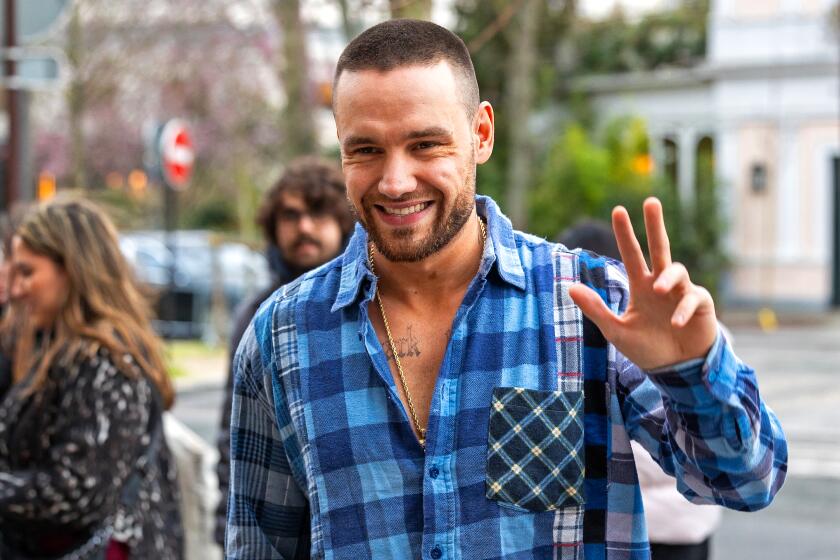NANCY GRAVES SHOW AT SANTA BARBARA MUSEUM
You might say Nancy Graves arrived on the art scene riding a hairy camel. Patching together burlap, wax and fur, the artist created life-size mock-ups of the cud-chewing mammals shown at the Whitney Museum in 1969 where she first came to public attention.
“The camels are startlingly life-like and still have an incredible power to them,” said Nancy Doll, curator at the Santa Barbara Museum of Art, where a retrospective of Graves’ sculpture, with camels, runs Saturday to Oct. 25.
“Nancy Graves: A Sculpture Retrospective,” organized by the Fort Worth Art Museum, includes 48 works from 1969 to 1985, though most are from the last eight years. During this time, the artist focused on vibrantly painted, airy bronze sculptures that merge man-made and organic forms.
From the camels, Graves moved onto “bone and fossil pieces, and began exploring notions about the inside and outside of a sculpture,” Doll said. “She was essentially building the armature of sculptures (their internal supports) and asking ‘is this a preliminary armature, or a finished piece?’ calling into question traditional notions about sculpture.
“But in the mid-’70s, she really got into bronze casting methods,” said Doll, who supervised installation of the exhibit. “Drawing on various sources, plant forms, ropes, packing materials and even food--like french fries, sardines and popcorn--she’d cast these objects into bronze. Then she began improvisationally welding the items together into a finished sculpture.”
Graves, 46, added her unorthodox patinas--vivid blues, pinks, yellows and greens--to these bronze pieces while working at the Tallix Foundry in Peekskill, N.Y., Doll said. In the early ‘80s, the artist began using even brighter colors, “such as intense oranges, aquamarine blues, marigold yellows or bubble gum pink, applied loosely with polyurethane paint.
“Her later sculpture tends to be open and kind of lacy,” Doll said. “Because she’s still dealing with these notions of interior and exterior space, the works aren’t discreet, solid objects in space; they have space penetrating through them,” like the sculpture of David Smith.
“Actually, Graves’ pieces are difficult to describe because they are so intricate and complex,” Doll said. “But they are very gestural, there’s lots of movement to them, and there’s a kind of wit about them because it’s funny to see zucchini or a string of sardines cast into bronze.”
Two Graves bronze sculptures, both over 10 feet tall, may be viewed at local outdoor sites: “Sequi,” at the Crocker Center downtown, and “Trace,” in the central courtyard of the County Museum of Art.
Graves will discuss her work at the Victoria Street Theater, 33 W. Victoria St., Santa Barbara, Thursday at 7 p.m.
CONSERVATION GRANTS: Twenty California cultural institutions are among 248 nationwide to recently receive a total of $3.2 million in conservation grants from the Institute of Museum Services (IMS).
The one-to-one matching grants are awarded to fund surveys of environmental and collection conditions, conservation of specific objects in institutions’ collections, training and research in conservation, and other projects.
Here is a list of the recipients and their grant amounts:
Huntington Library, Art Gallery and Botanical Gardens, San Marino, $24,656.
Frederick S. Wight Art Gallery, UCLA, $25,000.
UC Irvine Arboretum, $20,403.
California Museum Foundation, Los Angeles, $7,600.
California Museum of Photography, Riverside, $25,000.
Newport Harbor Art Museum, Newport Beach, $17,658.
Palm Springs Desert Museum, $25,000.
Riverside Municipal Museum, $1,540.
San Diego Historical Society, $15,400.
San Diego Zoo, $25,000.
Santa Barbara Botanical Garden, $8,543.
Santa Barbara Zoological Gardens, $25,000.
Southwest Museum, Los Angeles, $11,143.
Clarke Memorial Museum, Eureka, $2,259.
Amador County Museum, Jackson, $9,900.
Fine Arts Museums of San Francisco, $24,750.
Kern County Museum, Bakersfield, $4,436.
California Academy of Sciences, San Francisco, $18,849.
UC Berkeley Botanical Garden, $12,810.
UC Davis Arboretum, $18,250.
The IMS, an independent agency within the National Endowment for the Arts, funds museums, zoos, aquariums, botanical gardens and nature, science and technology centers.
AND THE WINNER IS . . . Peter de Lory, a San Francisco artist, has won $10,000 to create an artist’s book for publication by the California Museum of Photography at UC Riverside.
As winner of the Artist’s Book Competition, De Lory’s book will be published this month as the next issue of the museum’s innovative quarterly bulletin. The visual narrative, entitled “The Wild and the Innocent,” uses 16 color photographs of paintings, drawings and common objects to tell a love story.
De Lory, who has taught, lectured and displayed his work throughout the United States and in Canada, studied at the San Francisco Art Institute. His work is included in the collection of the San Francisco Museum of Modern Art and other institutions.
The museum has also put out a call for original photographic greeting cards for its “Fifth Annual Photographers’ Christmas Card Show.”
All amateur and professional photographers may submit cards of any size with photographs made by any process. All submissions will be placed on exhibit, beginning Dec. 4, and will be accepted through Jan. 3, 1988.
Submissions must include photographers’ names, addresses and phone numbers and will not be returned. Entries should be mailed to: “Fifth Annual Photographers’ Christmas Card Show,” California Museum of Photography, UC Riverside, Calif., 92521. Information: (714) 784-3686.
More to Read
The biggest entertainment stories
Get our big stories about Hollywood, film, television, music, arts, culture and more right in your inbox as soon as they publish.
You may occasionally receive promotional content from the Los Angeles Times.
